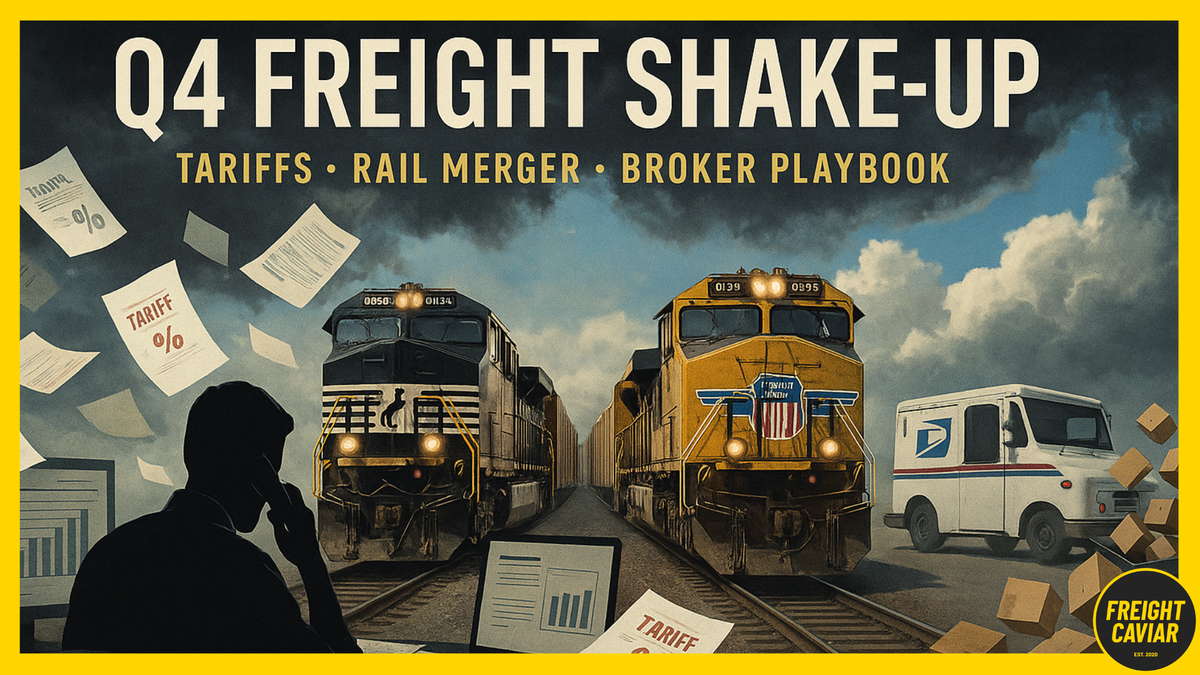🎣 Freight Alley Trip Recap
Join us as we sit down with Grace Maher and Reed Loustalot for a Freight Gong Friday recap.
C.H. Robinson and Uber Freight are expanding cross-border LTL services as U.S.–Mexico trade surges.

C.H. Robinson and Uber Freight are expanding cross-border services between Mexico and the United States, positioning themselves to capture opportunities in LTL and compliance support as trade flows surge and tariffs reshape supply chains.
C.H. Robinson launched a freight consolidation program this month to address long-standing inefficiencies in U.S.–Mexico freight, where trucks often cross underutilized due to customs requirements.
“Say you’re a company that assembles vehicle seats in the United States, and you’re importing foam, fabric, a wiring harness, a motor and switches from five different suppliers in Mexico,” said Jay Cornmesser, the company’s vice president for Mexico cross-border services. “You’re unnecessarily paying for too many trucks and unnecessarily paying for unused space on each truck.”
By consolidating loads at its Mexico center and using its proprietary Optimizer technology to determine the mode, route, and carrier, Robinson says shippers can cut costs by up to 40% while gaining visibility 48 hours before freight crosses.
Bonded warehousing is also a factor. “We can move freight in bond, meaning it can enter the United States through a bonded warehouse to defer U.S. tariffs for better cash flow or even eliminate tariffs if the freight is passing through to Canada,” said Ben Bidwell, Robinson’s senior director for customs.
Uber Freight is pursuing a similar strategy, embedding customs and compliance services into its Mexico offering. “One of the advantages that we have is we digitalize everything, and we have visibility at the border, which has traditionally been the black hole,” said Jesús Ojeda, head of Uber Freight’s Mexico operations, during the company’s Deliver 2025 conference.
“Customers can see every document, every check, every step in the same system,” he added, noting that shifting trade rules under the USMCA are driving demand for compliance support.
Mexico has surged to the top spot as America’s leading trade partner, with $507 billion in U.S.–Mexico commerce in the first seven months of 2025, up 21% from last year. Laredo alone processed $206 billion year-to-date, according to WorldCity.
Ojeda noted that shippers are adapting to new tariffs of up to 25% on certain imports. “As soon as we update our systems, we can react in real time and help customers avoid extra duties or delays,” he said.
The timing of these moves reflects deeper shifts in freight. LTL carriers have held pricing power even as truckload rates remained soft, and consolidation plays directly into that strength. As we noted in our earlier coverage, the end of the de minimis rule on Aug. 29 collapsed international postal traffic by more than 80%, creating opportunities for brokers to bundle customs, warehousing, and LTL distribution for shippers scrambling to adapt.

Meanwhile, manufacturing nearshoring in Mexico is adding consistent cross-border demand, particularly in the automotive sector. “Good things are coming there, and from Mexico as well,” Ojeda said of ongoing investments in Laredo and Monterrey.
Source: SupplyChainDive | FreightWaves
Join over 14K+ subscribers to get the latest freight news and entertainment directly in your inbox for free. Subscribe & be sure to check your inbox to confirm (and your spam folder just in case).